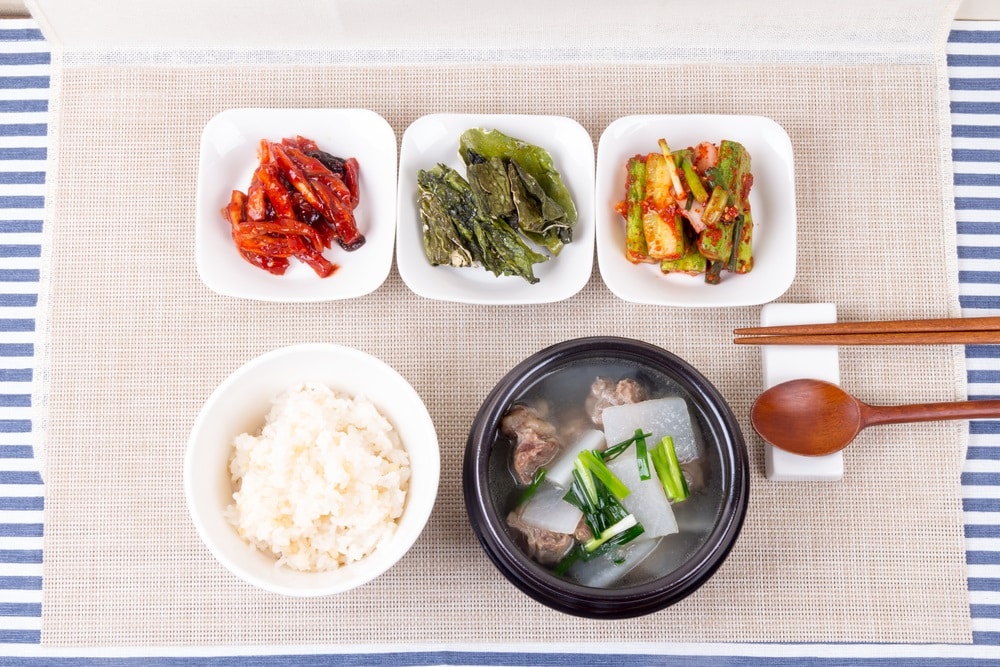
Westerners are becoming more familiar with kimchi as it is being promoted for its health benefits. For those of you who don’t know it, kimchi is a savory vegetable dish that is allowed to ferment. The live bacteria present are what give kimchi its health benefits.
Kimchi is a Korean dish made from various vegetables (and sometimes fruit) but the most well-known version is made with fermented cabbage.
Often ingredients like radishes, onions, carrots, garlic, ginger, and chili are added. Salt is added for flavor, as a preservative, and to draw out moisture.
Sometimes, homemade kimchi may be a little too salty for people’s taste so it is good to have a few hacks up your sleeve to fix this problem.
Sometimes the saltiness is a result of not rinsing the salted cabbage enough before continuing with the recipe so be very careful with this step if you are making kimchi at home.
How to Fix Salty Kimchi
Kimchi is supposed to have a somewhat pungent, sour, spicy, and tangy flavor with an undertone of saltiness.
It is packed with umami flavors and has a delicious heat from the addition of chili while the fermentation process results in the characteristic sour flavor. However, if the kimchi has become too salty, it will not be pleasant to eat.
Let’s see what can be done to fix it!
1. Use Unsalted Kimchi
The simplest solution is to mix your salty kimchi with an equal amount of unsalted kimchi. Of course, you will end up with double the amount but that’s no hardship. You could even give some to a neighbor who hasn’t tried it before!
Be sure to mix the two batches thoroughly to make sure there are no flavor variations throughout the new batch. At room temperature, kimchi will stay fresh for about a week.
If making this larger batch results in too much to finish in a week, store the rest in an airtight container in the fridge.
2. Just Wait
If you don’t want to double the quantity of kimchi, you could try waiting it out and see if the fermentation process will resolve the issue. Often, people are too quick to taste the kimchi, but kimchi that is not ready yet will either taste too mild or too salty.
However, if you just wait for up to two weeks, the fermentation process will balance out the flavors, including the excessive saltiness. For this reason, we suggest that you wait for a few days before you start trying to fix the kimchi.
3. Add Radish
It doesn’t matter if you have daikon radish, red radish, or Asian radish in the fridge; you can use any of them to tweak the saltiness of the kimchi. Radish has a watery texture, which plays an essential role in diluting the extra salt in the kimchi.
However, you need to remember that adding radish will change the texture and make the kimchi extra crunchy. So, if you can handle the crunchy texture, go ahead and layer the slices of radish on top of the kimchi to reduce the saltiness.
If you prefer a softer texture, grate the radish, stir it through the kimchi, and allow it to ferment for a few days.
4. Bulk It Up
While we have already added that you can use the same quantity of unsalted kimchi to reduce the saltiness, you can also bulk up the kimchi by adding extra other kimchi ingredients.
For instance, you can add red peppers, cucumbers, carrots, daikon, or extra cabbage. Adding these ingredients will increase the overall quantity of kimchi, which reduces the concentration of salt.
At this point, you may wonder if it’s okay to add non-fermented, fresh vegetables to the already-fermented kimchi, but it is not a problem to do that.
To add the additional ingredients to your kimchi, first peel then slice them finely and mix them with the kimchi. Leave the new mixture for two days, and the flavor will be optimized.
5. Use Kimchi with Something Else
Sometimes when you taste your kimchi on its own, it tastes overly salty. However, by mixing it with another dish or serving it with other food, the saltiness will not be noticeable.
In Korea, kimchi is often served as a side dish with meat and rice. If you ensure these other elements contain very little salt, everything will balance out when eaten together.
You could also dilute the kimchi by using it in fried rice, on hotdogs, in spaghetti, or enjoy it with tofu.
The Bottom Line
The bottom line is that kimchi is one of the most delicious items out there, and you can easily make it at home with a fermentation time of over two days. However, if the kimchi tastes too salty, just follow this article!


